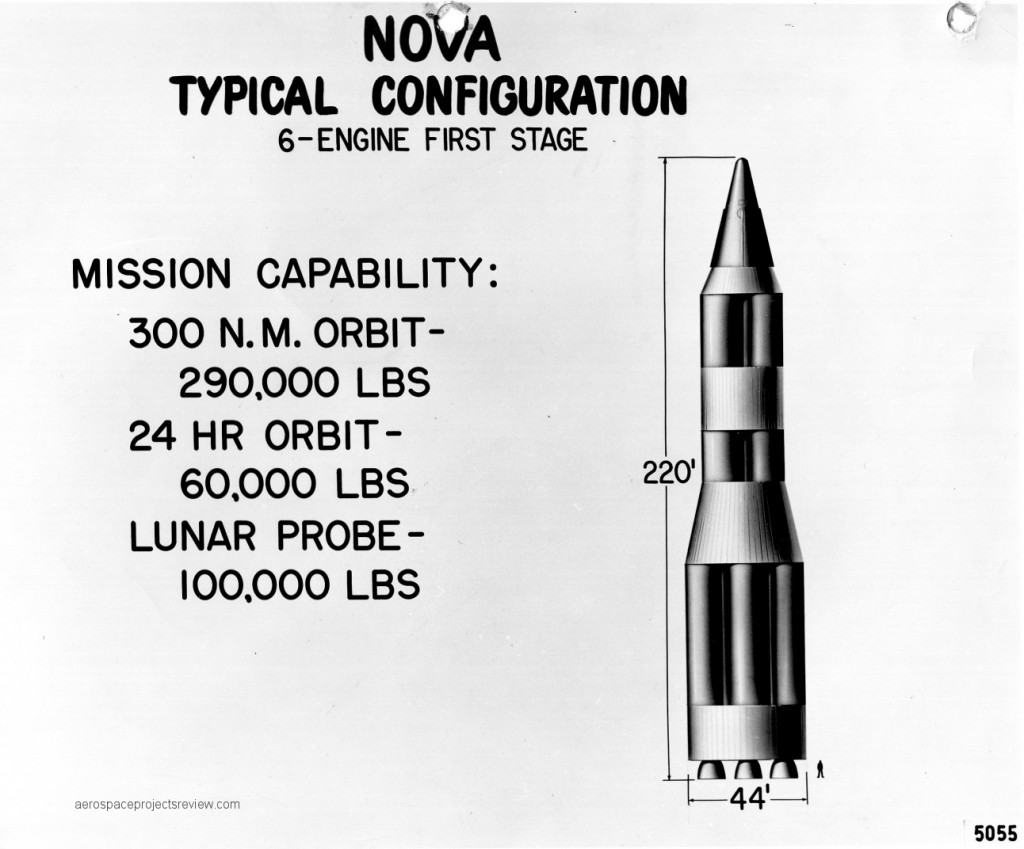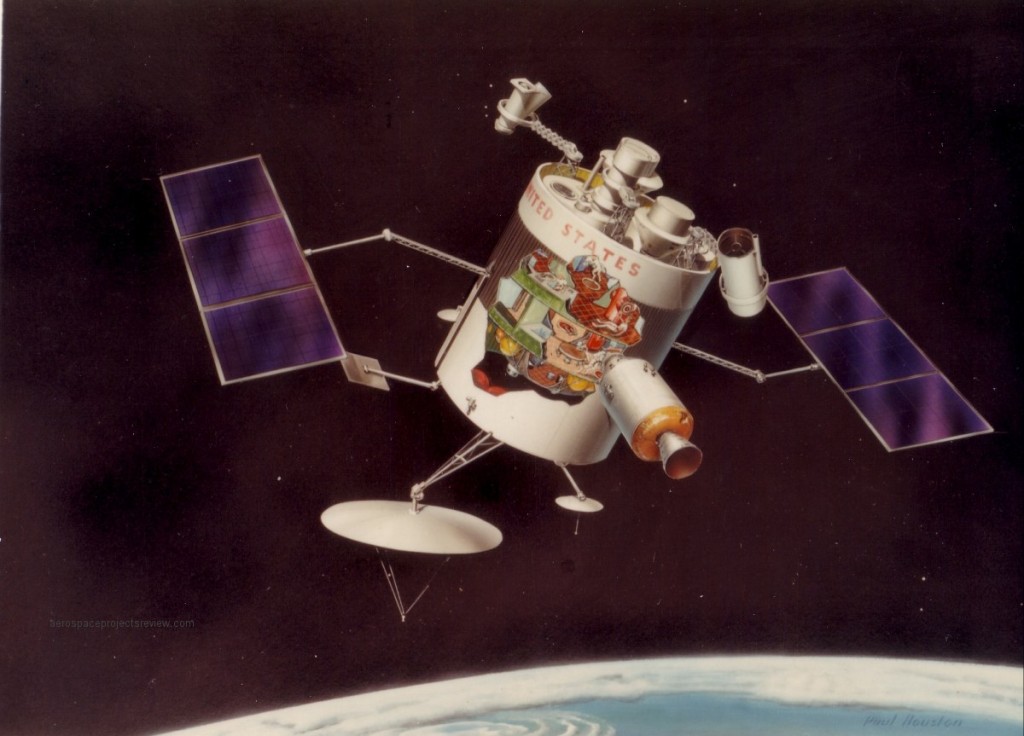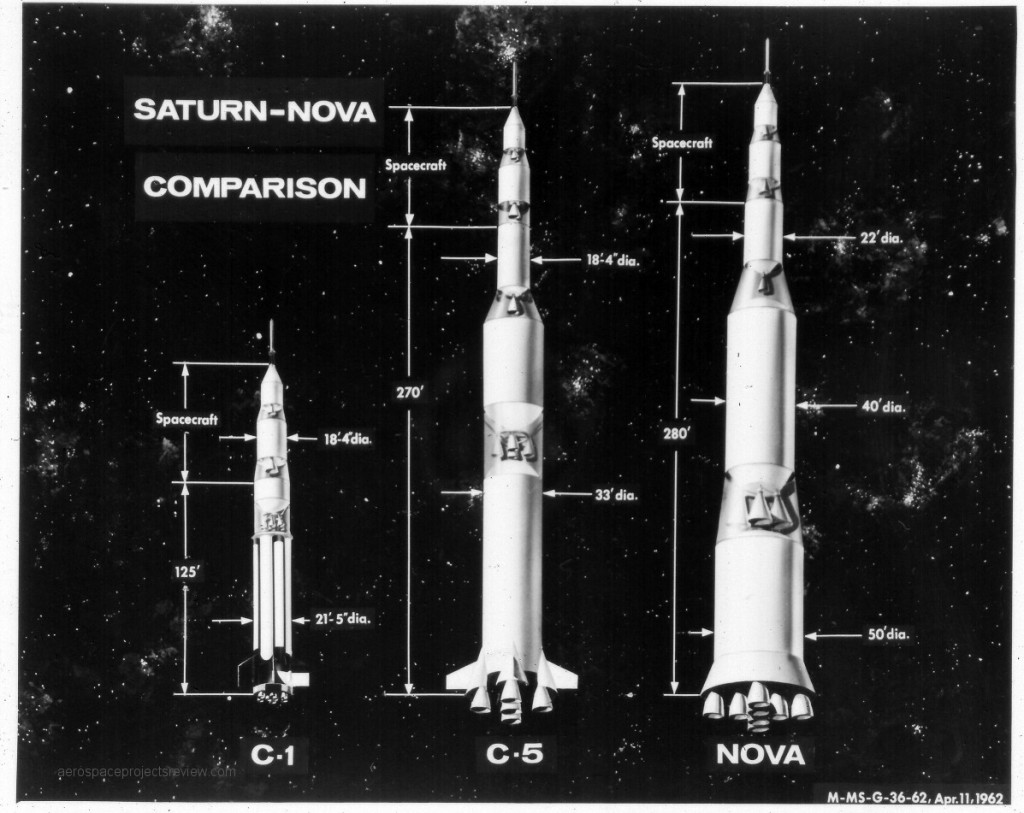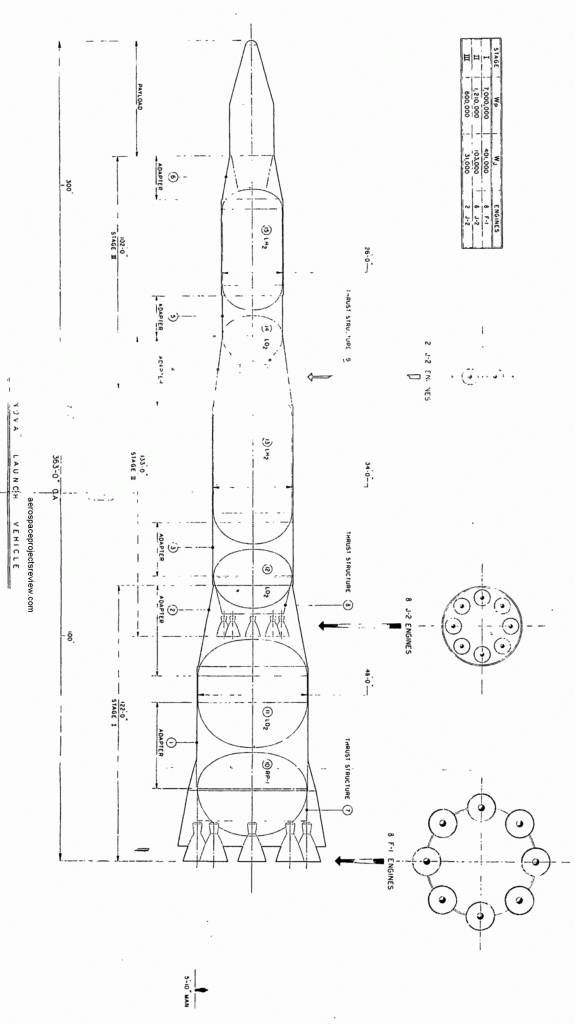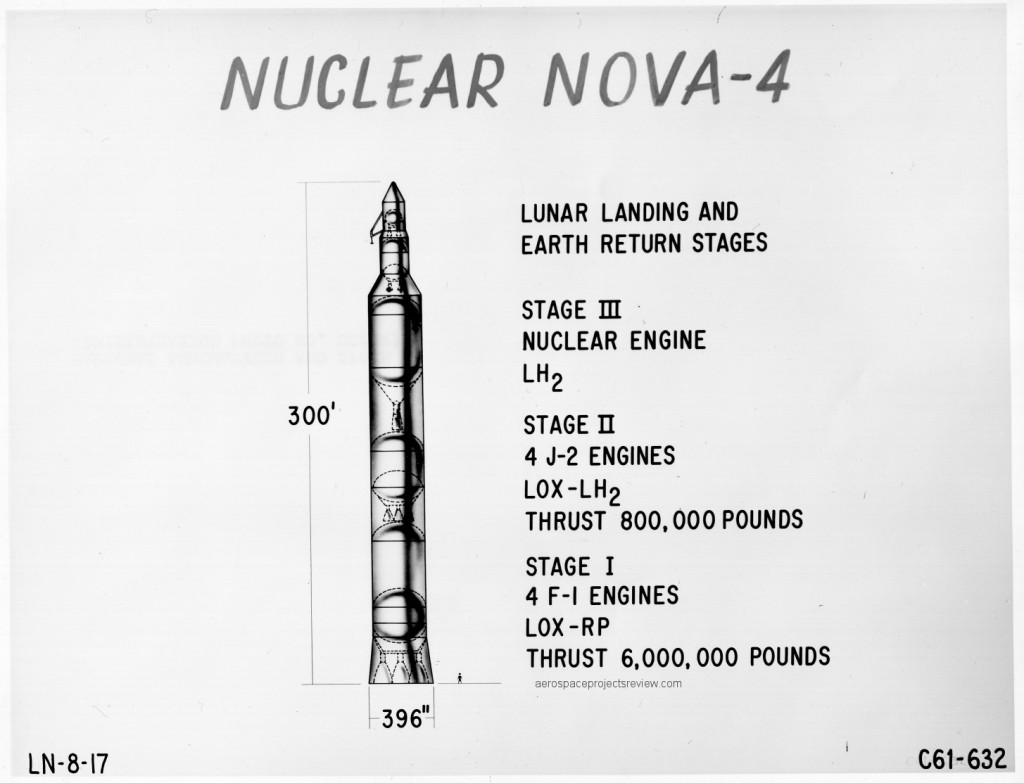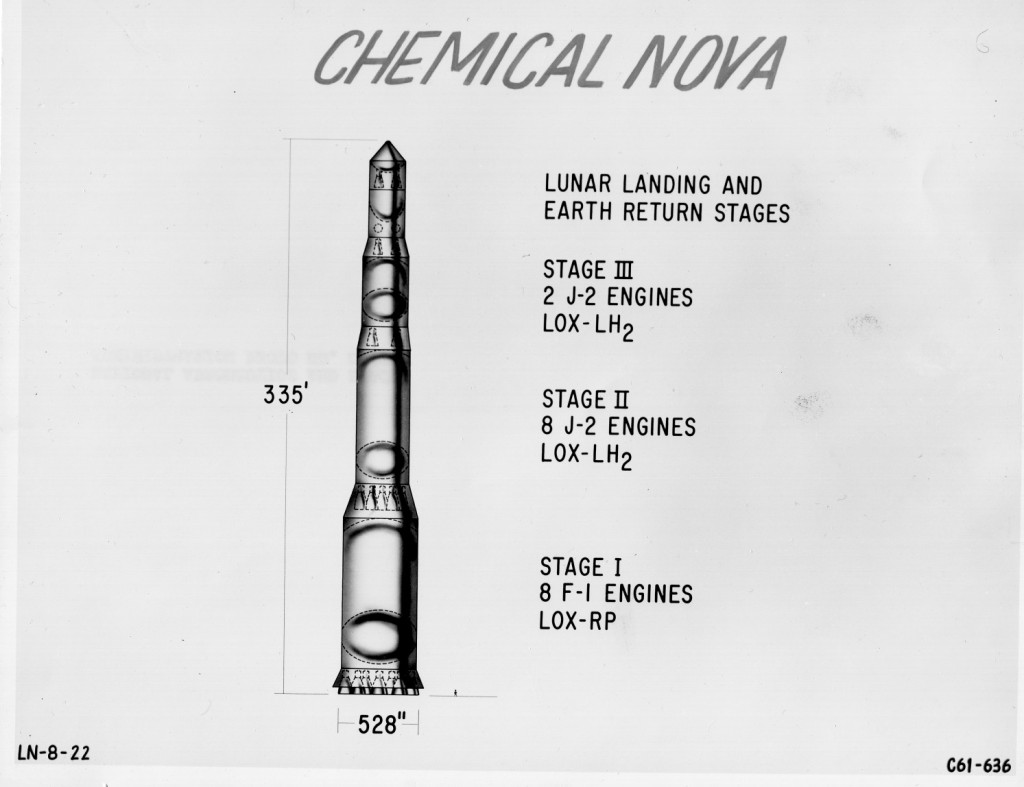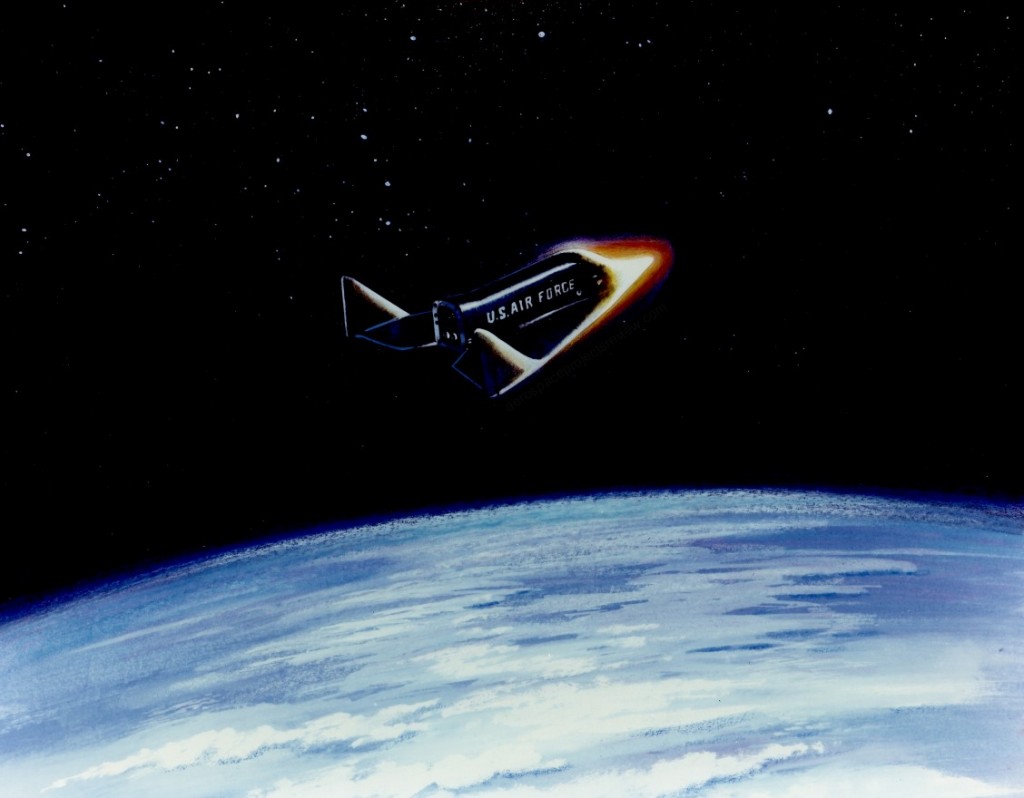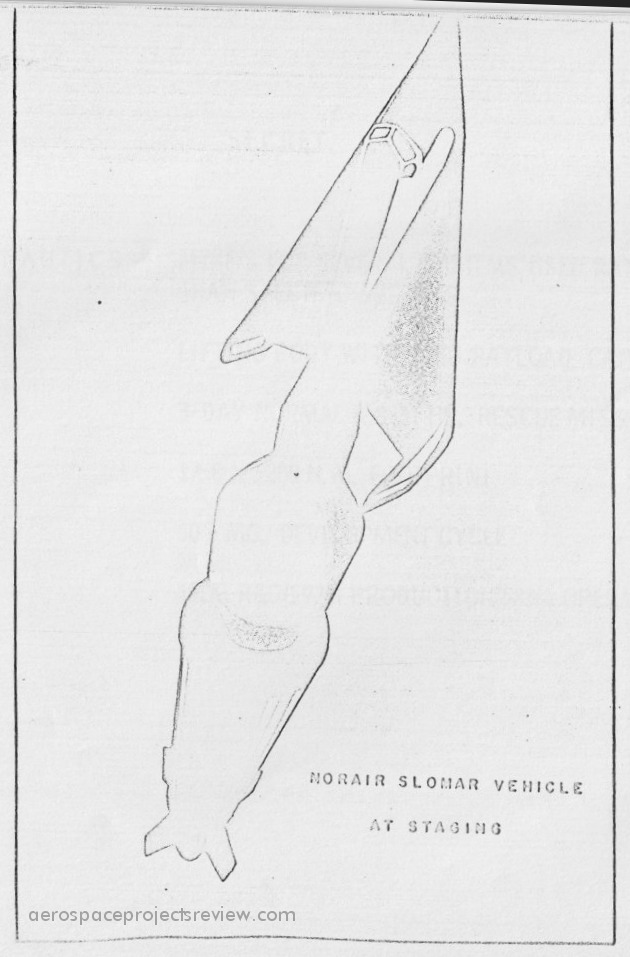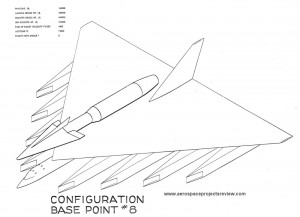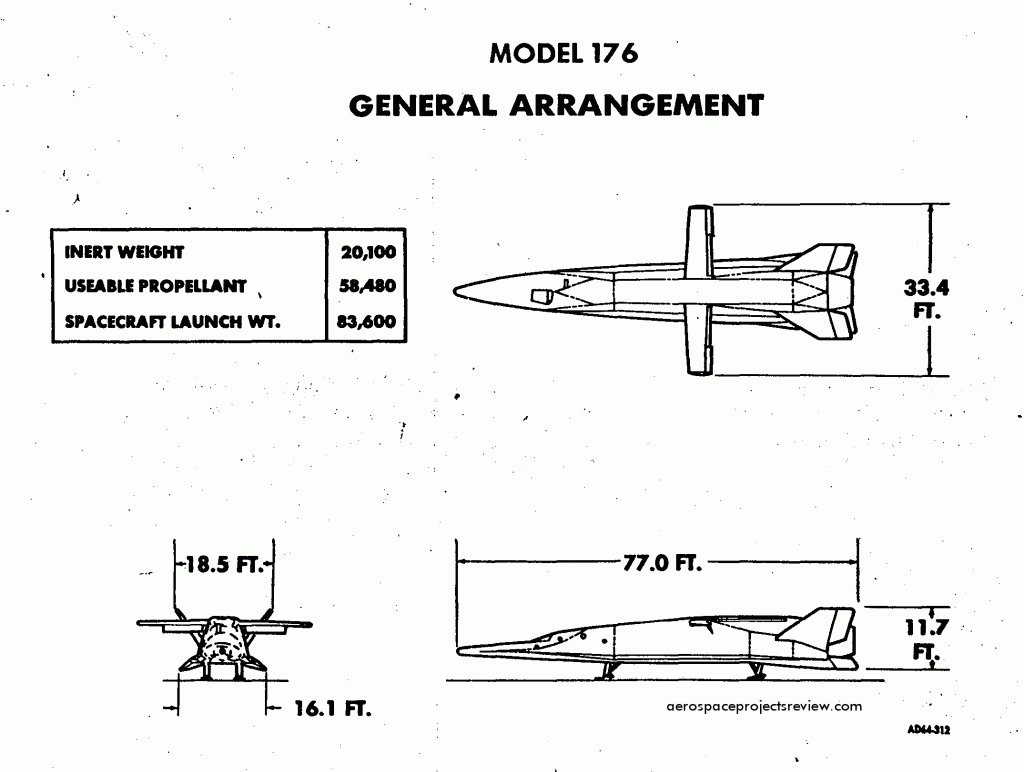A relatively well-known and very early design for a Nova vehicle. It is interesting in that it has only a slightly more powerful first stage and seemingly smaller and heavier upper stages than the Saturn V, yet was designed to put a very heavy lander directly onto the lunar surface.
No further data than the painting. Found some years back in the Boeing archive, so possibly North American Aviation. Appears to depict a dry-lab station built from Saturn V components, in this case apparently a shortened S-II stage.The Apollo capsule docked to the side seems a somewhat dubious proposition; there doesn’t appear to be an airlock there.
The use of such a space station as a mounting point for large astronomical telescopes such as shown here is also dubious. Vibrations, everything from solar panels being turned to air circulation systems to fluids being pumped to crewmen bumping around, would contribute to a pretty noisy image.
A 1962 NASA graphic showing the Saturn I, Saturn V and one or the more stereotypical of the Nova configurations to scale. Note that they all show direct-landing Apollo spacecraft… an extra stage, and no LEM. The Nova is similar to the “Saturn C-8” configuration. Note that the second stage of the Nova is larger in diameter and almost as long as the first stage of the Saturn C-5, and would have made the basis of a fairly substantial launch vehicle on it’s own.
A NASA-Marshall concept for a Nova launch vehicle. Nova began life as a vehicle somewhat smaller and lower-capability than the Saturn V, and quickly grew substantially larger than the Saturn V, ending its run as the “Post Saturn” launch vehicle (with designs such as ROMBUS and Nexus). This design features eight F-1 engines on the first stage, and has been, probably apocryphally, referred to as the “Saturn C-8.”
A piece of NASA presentation artwork from 1961 showing a basic design for an all-chemical-rocket design for a Nova launch vehicle. This would have been somewhat more powerful than the as-yet undesigned Saturn V; and it would have needed to be in order to carry of its mission. The Lunar Orbit Rendezvous design had not yet been chosen, and consequently the Apollo capsule and the service module both would have been landed directly on the lunar surface.
The quality is terrible, but apart from photos of a display model, this is the only illustration have of Northrop’s design for SLOMAR (Space LOgistics Maintenance And Rescue), a USAF program circa 1961 to study the sort of spacecraft that would be needed for crew and cargo transport to the space stations that everyone knew the USAF would have in some abundance by the end of the decade. The Northrop design is virtually identical in configuration to the Boeing Dyna Soar, though apparently a bit bigger.
A 1959 Boeing concept for an airbreathing HTOL booster for Dyna Soar. Compared to the other pure-rocket VTO boosters, this would have been a monster… far bigger, far heavier, far, far more expensive. Which almost certainly explains why not only did such a booster not get serious study further down the line for Dyna Soar, it didn’t even rate detailed diagrams in the reports.
Staging would have been an interesting show.
NOTE: The isometric artwork for baseline concepts 4-7? Not available, sadly.
As of 1964, the GA of the Models 176, a lifting body, stowed-wing spaceplane. See HERE for late 1960’s artwork of a larger version.
